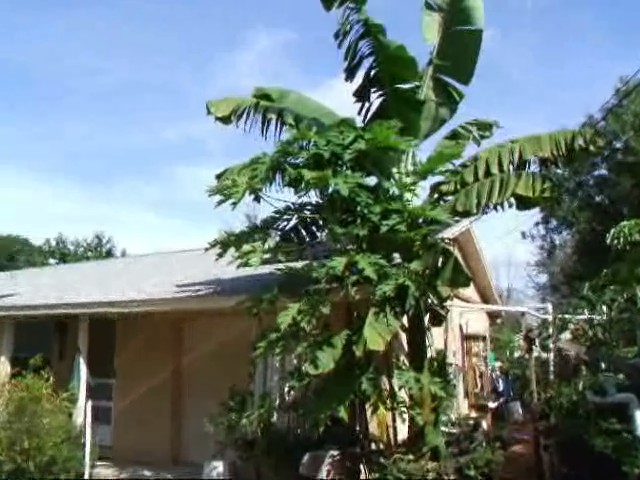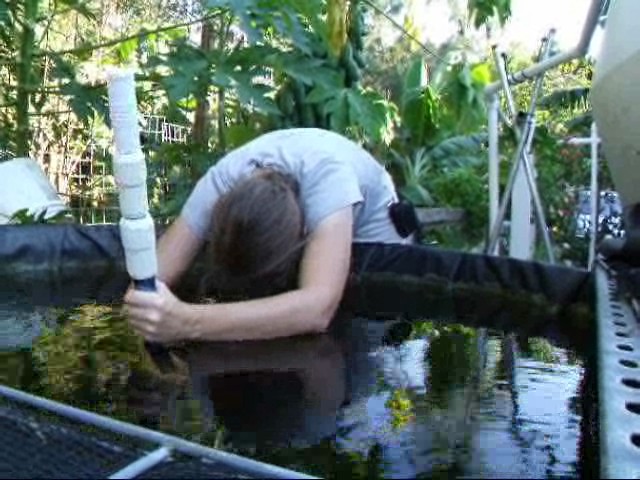Originally posted by TCLynx on AGC, June 1, 2010
Fish feed can be a big dilemma for aquaponics. Especially for people who want to be as sustainable as possible or organic as possible or want to grow fish that are as healthy as possible to eat.
Here are the main problems with commercial fish feeds.
Most commercial fish feeds are mostly corn and soy based as these are commodity crops that are cheapest to make animal feeds out of. In this country it is becoming nearly impossible to get those crops organically and most animal feeds are not organic anyway. Corn and soy are not among the more sustainable crops to grow, most of it is grown on industrial farms and totally dependent on heavy machinery and chemical fertilizers, pesticides and herbicides. Corn and Soy are also a couple of the worst foods as far as the omega 3 to omega 6 ratio goes so farmed fish generally have a far worse ratio of those than wild caught fish because of the feed. And then there is the fish meal that is used to make fish feeds. How to know if the fish meal is coming from a sustainable source or a contaminant free source?
Big Dilemmas. Many people then push the idea of growing tilapia because they are “vegetarian” and grow so fast. Sorry, tilapia are actually omnivorous fish (especially the young have a huge protein hunger and will happily eat smaller fish when they can.) They can survive on vegetarian diets but they will not grow as fast if you are expecting duck weed to grow your fish and it does take lots of duck weed. Now algae can grow tilapia but that is generally done in extensive systems and requires careful monitoring to get enough algae to grow but not so much that the system crashes and kills all the algae as well as all the fish. Algae culture is not generally recommended in aquaponics since it can play havoc with pH, dissolved oxygen, filtration and the plants. Even so, duckweed and small amounts of algae as well as parts of plants and veggies can supplement the feed for omnivorous fish that will eat plants/veggies but it is unlikely that most of us will manage to feed large numbers of fish entirely on such feeds.
Duckweed is great if you have huge space to grow it and dry it but I know that 12 tilapia can completely clean off the surface of a 16 foot long by 30 inch wide raceway of duckweed in a week if they are not being feed enough commercial feed and unless you have a huge supply to replenish it you will be out of duckweed. Duckweed does like ammonia though and will use it up very well, however, I’ve had trouble with gunk building up in the bottom of a duckweed tank and becoming a dangerous source of nastiness that when stirred up can release hydrogen sulfide into the water. I’ve not come up with an easy way to grow lots of duckweed in outdoor tanks without running into a gunk problem.
What about worms and BSF larva? They can also make a great supplement to fish diets, however, a steady diet of only worms or BSF larva is going to be a diet too high in fat and will affect the livers of fish like catfish and tilapia. I know some people have prepared and rendered out the fat from such feed stocks for making fish feed. Does you plan for feeding your fish include cooking up worms and maggots in your kitchen? (I’ve heard of much worse things been cooked up for the benefit of aquaponics but I don’t know that most of us are going there.)
So weigh your options and make your choices. Using high quality commercial feeds (appropriate to your type of fish) does provide balanced nutrition and fast growth. Fish feeds don’t keep long term so be sure to buy fresh and use in 6 months if possible. Keep in well sealed dry containers in the shade and only keep a small amount out by the fish tanks.
A note on aquarium, pond and koi feeds. Many feeds for ornamental fish are designed to keep the fish alive and healthy yet provide the least amount of ammonia/phosphorus possible in order to minimize water change and algae blooms in the aquariums and ponds. These feeds probably won’t provide enough nutrients for good plant growth in an aquaponics system. They are designed for fish that people want to grow slowly and look pretty. In aquaponics we need higher protein levels and other nutrients to not only grow our fish to plate size but also provide balanced nutrients for our plants.
There are feeds out there meant for feeding fish in natural earthen farm ponds. These are really just supplemental feeds and still expect the fish to get a certain amount of their nutrition from wild sources. The few of these pond feeds or pond diets have not provided very good results when I have tried them.
Where do you find commercial fish feeds. Well I’m sure there are other sources out there but this is what I’ve been doing here in Florida and I’m sure it could work elsewhere in the country.
I’ve been using Aquamax fish feed. It is a Purina Mills product. They have different formulations for different types of fish and different sizes for all stages of growth. The dense culture feeds are appropriate for recirculating aquaculture and aquaponics. You can go to the Purina Mills web site and look up their different fish feeds as well as search for Purina dealerships in your area. Most feed stores won’t carry fish feed as a regular stock item (and you don’t really want them to unless there are lots of people buying it all the time since fish feed will go bad sitting in a sack on the shelf for long.) You can call the dealerships in your area and ask if they would have a sack of the feed you want put on the next regular delivery from Purina and find out how much they charge for it and what the ordering and delivery schedule is. (Just a note, Tractor Supply may be a Purina dealer now but at least in my area, they won’t do special orders and they don’t stock the aquamax fish feeds. I think it has to do with the individual stores getting products through a central warehousing facility rather than direct from the suppliers.) There are many smaller feed stores around the area that will get the fish feed for me when I call so I just have to put the call in a week in advance of when I’m gonna run out of feed.
I also have bug zappers over each of my fish tanks to provide bugs for the cost of 15 watts per zapper.
In another post I will have to examine my struggles to find a good automatic feeder.
Here is another post you may find interesting Comming Back Around to the Earth





I don’t make fish feed nor do I have any experience with carnivore fish feed. I’ve been using mainly the Aquamax 4000 dence culture feed which is a omnivore fish feed. Aquamax is a Purina Mills Productand they do make carnivore fish feeds, perhaps contacting Purina would be a more efficient way of becoming a distributor.
Dear Sir,
Hope you are fine. I read your organic fish feed idea. it is unbelievable and innovative. I have been try to develop a Cooperative Society organic fish culture association by ignoring fisherman. We produce vermicompost, earth worm, vermi wash, Azolla, cow urine. So how can we use for organic fish as feed.
Regard,
Dr. Md Shamsul Bari
Associate Professor, Management
bari1265@gmail.com
8801552464475